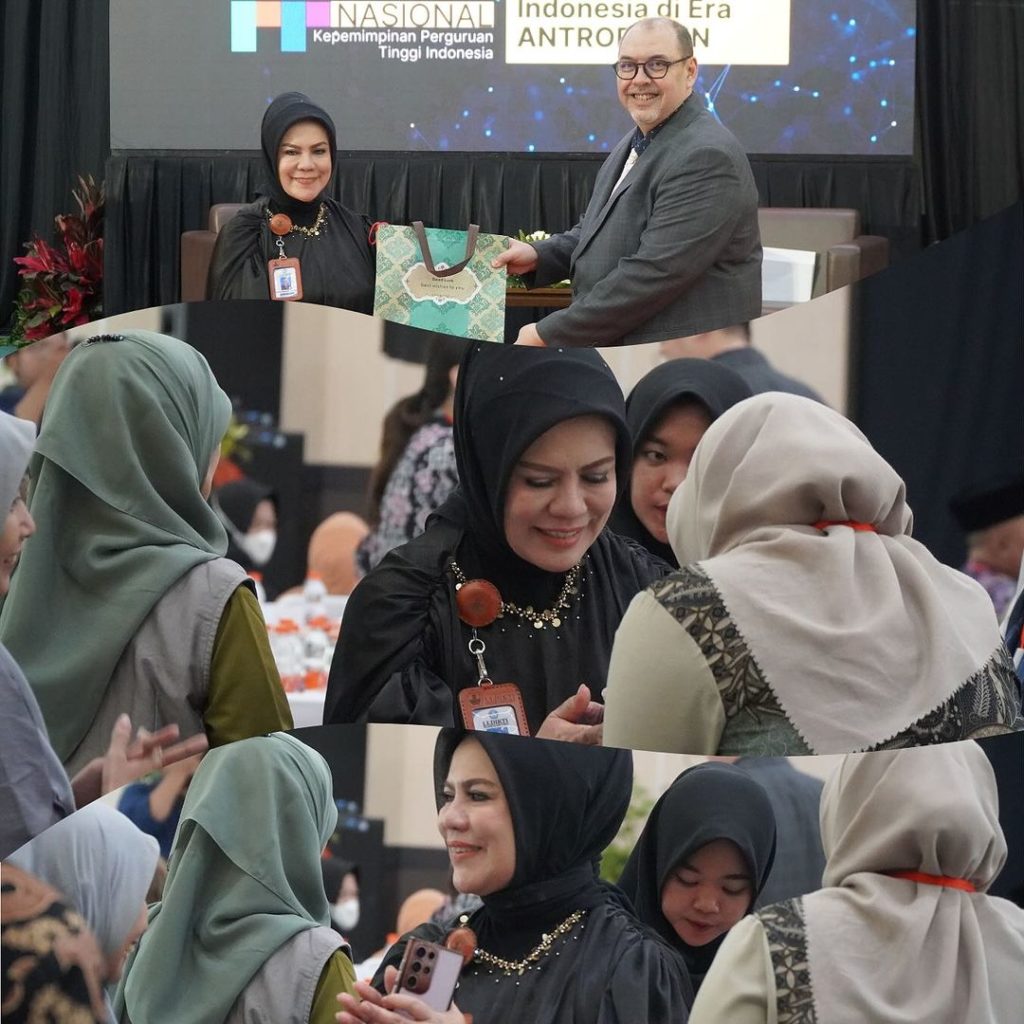Indonesian: The Struggle for Recognition

Duncan Graham, The Jakarta Post

Language instruction: Japanese students Ayaka Mashimo (left) and Yuka Ueno study Indonesian with teacher Etik Nuraeni at an Indonesian for Foreign Language Speakers (BIPA) course.
Manpower Minister Hanif Dhakiri has sent a quiver of concern through the expat community: He proposed early this year to revive a 2013 regulation forcing foreign workers to pass a language test.
Jack Kreiser is clearly more scholarly than his freshman features suggest. Unlike the clichéd American character, he comes across as polite and reserved, which suits Indonesian culture just fine. The 20-year-old also has no clear career plan.
“I’m interested in learning Indonesian and seeing what happens,” he said. “It’s just for fun. I’ve always been keen on languages and geography. My parents worry, but I’m OK – people are friendly and supportive.”
He’s studying at Malang’s Malangkuçeçwara College of Economics (MCE) on a six-month Indonesian for Foreign Language Speakers (BIPA) course. The campus is one of 104 institutions offering BIPA courses across the country.
Before he flew to East Java, Kreiser studied Indonesian at the University of Minnesota, which has more than 51,000 students. He was the only one interested in the vocabulary and grammar used by almost 300 million people.
According to the Modern Language Association less than 300 tertiary students across the US are comfortable asking, “Apa kabar?” (What’s up?)
What is up? The US is far away so the indifference might be understandable — although not excusable for the world’s most powerful nation. Surely it must be different in Indonesia’s southern neighbor separated by a narrow sea?
Not so. Fewer than 1,000 senior high school students in Australia are learning Indonesian. Far more were interested in 1972. The decline has been blamed on the 1998 Asian economic crisis, the Bali bombings of 2002 and 2005 and subsequent travel warnings that curbed educational exchanges.
Japanese is now the most popular language taught in Australia.
Melbourne University Professor Tim Lindsey predicts that Indonesian studies will be extinct at the tertiary level within eight years and this despite shouts of protest by academics, diplomats and traders dating back decades.
In the Australian parliament shadow treasurer Chris Bowen has been making headlines by confessing he’s learning Indonesian, as though this is something weird.
“We need a broader, less transactional relationship with Indonesia that needs to have mutual respect and one way we show interest and respect is learning the language,” he told journalists.
But he did not say what his Labor Party would do to change the situation if it wins office in the election next year and he did not get widespread support.
Western Australian Premier Colin Barnett, who was in Jakarta last month to check on the 25-year sister-state relationship with East Java, reportedly rejected the idea that Asian language studies need to be saved.
“There are very few parts of the world where meetings aren’t conducted in English and they are generally not with interpreters,” he told Australian Associated Press (AAP).
These are slaps in the face for the world’s fourth largest nation, whose unity has been built on consolidating a national language that’s the most used in Southeast Asia.
In October 1928, nationalists at the Second Youth Conference in Jakarta swore the Sumpah Pemuda youth pledge: one motherland, one nation, one language.
Then, as now, Javanese was the most spoken of the archipelago’s some 700 languages, while Dutch was used in government and business.
Instead, the far-sighted delegates at that time chose what was once known as Trade Malay and called it Indonesian. The decision was a master stroke, ensuring national unity.
Outside Southeast Asia, Indonesian is dwarfed by Chinese, Spanish, Hindi and English.
BIPA is Indonesia’s fight-back. It’s a non-degree program run by the Education and Culture Ministry, designed to promote the Indonesian language by providing courses for foreign students.
Apart from these, there are 136 BIPA programs in 22 countries, including Australia.
Although some students fund themselves, most are like Kreiser, winners of Darmasiswa Scholarships — an Indonesian government award started in 1974. Next year, 640 successful applicants from 78 countries will get a monthly Rp 2 million (US$145) stipend and free tuition.
Three of the 19 enrolees at MCE have a Darmasiswa, including Ayaka Mashimo, 20, from Saitama and Yuka Ueno, 21, from Tokyo. Their learning is even tougher because the Japanese kanji and kana writing systems are worlds apart from the Latin alphabet.
Like many foreigners, they struggle with the complex system of prefixes and suffixes.
“Most people think I’m Chinese,” said Mashimo. “I just smile.” But her colleague insists on explaining that she is Japanese and why she’s in Indonesia.
For those wanting to study privately at MCE, monthly fees, including tuition, homestay, all meals and field trips amount to US $1,375 (Rp 19 million). Air fares and visa costs are additional.
“One of the realities is that many Indonesian universities are opening BIPA programs and they are of greatly varying quality,” said Professor David Hill, the founder and director of the Australian Consortium for In-Country Indonesian Studies (ACICIS).

Going over the material: An Indonesian for Foreign Language Speakers (BIPA) teacher at the Malangkuçeçwara College of Economics (MCE), Widodo (left) discusses a lesson with his student Jack Kreiser from the US.
This has placed almost 2,000 foreign students in top Indonesian universities during the past 20 years.
“Even those [BIPA courses] at highly regarded universities are often very poorly taught. I believe such programs won’t attract Australian students unless they are well-run, attuned to the more interactive teaching styles that Australians expect and widely marketed in Australia.
“There is a plethora of choice, but very little of excellent quality.”
MCE course controller Widodo — who said that “Indonesian is my second language, Javanese my first” — pioneered BIPA and has won awards for his work in Malang. He agreed that standards varied across the archipelago.
He said MCE classes followed a total immersion program and were kept to less than 12 to ensure close contact. He and his staff, who are trained teachers, have produced their own textbook called Practical Indonesian.
Notices around the campus along with wayang kulit shadow puppet figures remind all that “Disini hanya berbahasa Indonesia” (Here we only speak Indonesian).
“Not all work is in class,” he said. “We take trips to markets, events, public buildings and cultural sites. I want Malangkuçeçwara to be the center of excellence so foreigners appreciate our life and culture. As a consultant to BIPA, I’ve been pushing for the national accreditation of course providers.”
So has the Association of BIPA Teachers, according to its director Dr. Liliana Muliastuti.
“We are working with the Ministry to achieve this — maybe next year,” she said.
“Interest in Indonesian is growing, particularly from ASEAN countries, and we are sending BIPA teachers overseas.”
The Indonesia Australia Language Foundation, an organization set up by the Indonesian and Australian governments, has offices in Jakarta, Surabaya and Denpasar.
Although its primary purpose is to teach English, 40-hour courses in Indonesian costing Rp 3 million, less for bigger classes, are available.
Private institutions claiming to have diplomats and multinational companies as clients are also advertising on the internet.
“Until we get national accreditation, prospective students should do their own research on the quality of the institution and what it has achieved,” Liliana said.
— Photos by Erlinawati Graham
source: http://www.thejakartapost.com/news/2015/12/20/indonesian-the-struggle-recognition.html




You must be logged in to post a comment.